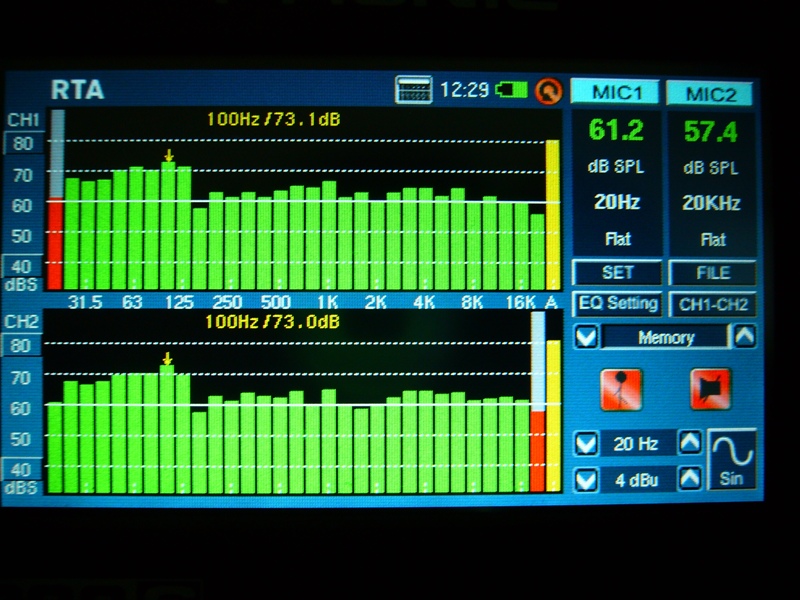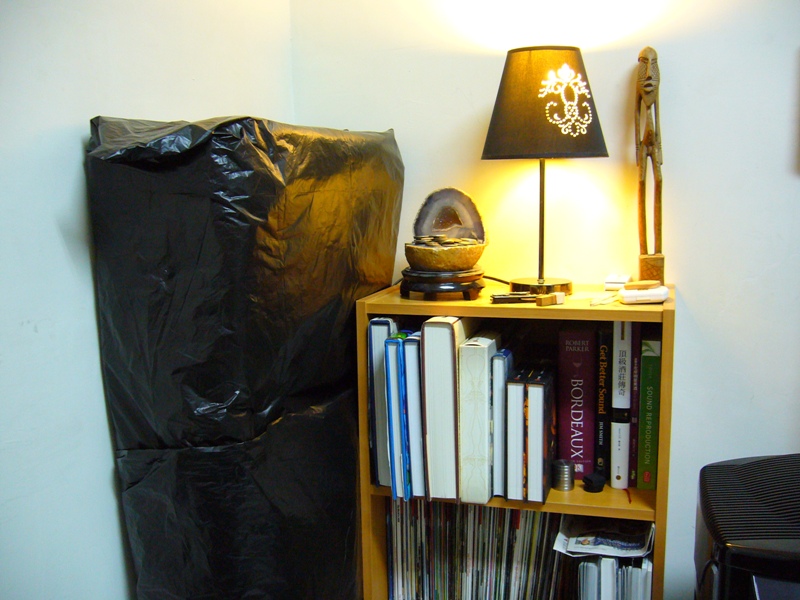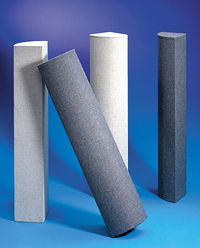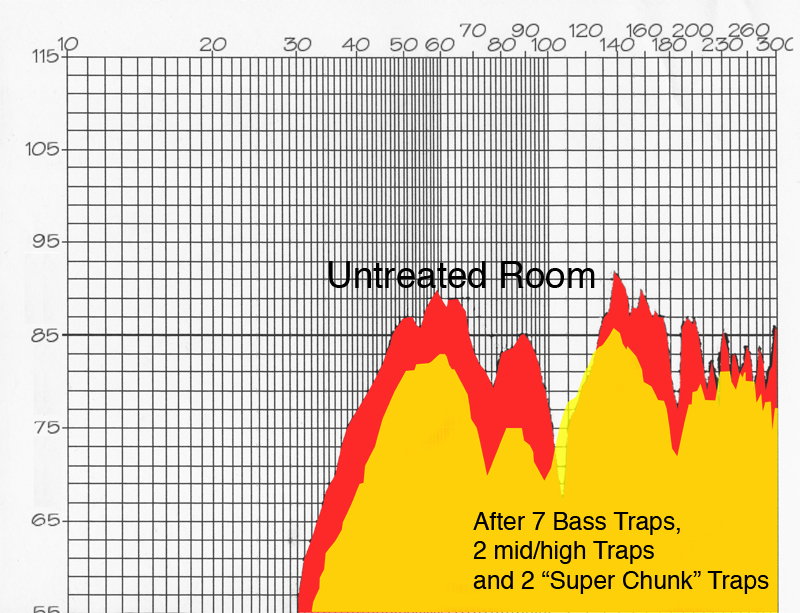
-

有主題就可開始討論[爭論]討論多了都在學習 學習多了就認識更寬廣了
玩了半輩子的音響 世間喧嘩 不如孤獨 寧靜 思想 深山幽谷中的一股清泉
-
-

 作者: 將軍

這樣的態度不好.
你有些文章是不錯,我都曾經給你個讚.
當然或許你認為不需要,但這是就事論事.
如果要提出你可以做到的具體反證,那必須要有實證.
提不出真正的實證,就只會淪入口水戰.
要證明自己比別人強不是不行,但要有真實力.
網路要用嘴巴說"真實力"誰都會.
但到了現實生活如果仍是這樣,那有何意義?
這裡的素質很優,我也認為你有獨到的一面.
但必須要有真正可顯示的實證(力)!!
將軍兄,在下對您亦是有欣賞處,兄漸漸學習與了解這是一科學的系統工程,並非玄學.
在下也是給過將軍兄讚,剛才在下也正看到將軍兄選用EQ事情.有幾句話講的很不錯.
許多事在下實證過,然有些實驗室等資料是無能公佈,要能公佈者在下就得再自己想設法重構TEST所需的事物.如SUB的特性,在下為讓國人與國內廠商知悉 如何接軌於國際的TEST與性能,因而也無償的為國內廠家的SUB進行測試,資料公佈於友站.在下現今亦尚無將軍兄般的財力,若然有之,許多TEST事務早已能備妥,在下能於公餘做多少算多少,僅能如此.
實力當非靠嘴,而音響圈很多燒友以為實力就是財力,殊未知術業有專攻,擁有財力並非就能擁有知能,許多國內商家與國內有些網友皆難以接受較真實的話語, 在SUB的性能方面以往常也如此,攻擊嘴炮漫言四飛,於在下建構相應的TEST事物,做出了TEST後,如今許多網友已漸漸瞭解一些商家與網友的不理性行為.
感謝兄認為在下有獨到的一面,也正如在下欣賞將軍兄處,亦有獨到的一面.
-
The Following 2 Users Say Thank You to THXman For This Useful Post:
-

 作者: THXman

將軍兄,在下對您亦是有欣賞處,兄漸漸學習與了解這是一科學的系統工程,並非玄學.
在下也是給過將軍兄讚,剛才在下也正看到將軍兄選用EQ事情.有幾句話講的很不錯.
許多事在下實證過,然有些實驗室等資料是無能公佈,要能公佈者在下就得再自己想設法重構TEST所需的事物.如SUB的特性,在下為讓國人與國內廠商知悉 如何接軌於國際的TEST與性能,因而也無償的為國內廠家的SUB進行測試,資料公佈於友站.在下現今亦尚無將軍兄般的財力,若然有之,許多TEST事務早已能備妥,在下能於公餘做多少算多少,僅能如此.
實力當非靠嘴,而音響圈很多燒友以為實力就是財力,殊未知術業有專攻,擁有財力並非就能擁有知能,許多國內商家與國內有些網友皆難以接受較真實的話語, 在SUB的性能方面以往常也如此,攻擊嘴炮漫言四飛,於在下建構相應的TEST事物,做出了TEST後,如今許多網友已漸漸瞭解一些商家與網友的不理性行為.
感謝兄認為在下有獨到的一面,也正如在下欣賞將軍兄處,亦有獨到的一面.
也就因為如此,才希望借助你的真實力來舉例一些實證.
我相信大家都會和我一樣,希望看到的是實證.
如同我前頭所言,要提出相反的意見並無不可,但要有實證才能讓人信服.
我也是從無到學習過來的,畢竟沒有人天生就會任何事物.
舉出實證的理性討論,也是MY-HIEND的宗旨.
否則就如隔壁網站的芭樂人,提出個VTA動1/1000都能聽音分辨的論調,你會相信嗎??
當然不會,因為VTA如要動1/1000要怎麼量都不知,要如何說服其他人相信??
我絕對認同你是理性講求實證的人,所以,就讓我們更快樂的討論,也讓大家能更了解並學習你的獨到之處!!

StevenCheng將軍
-
The Following 8 Users Say Thank You to 將軍 For This Useful Post:
-
 第一類低頻陷阱 第一類低頻陷阱
第一種低頻陷阱為多孔性的吸音材, 許多隔音用的材料如岩棉等以及泡棉類的材料都屬於這類.
市面上不論是吸音板或是低頻陷阱大多屬於這一類.
優點是C/P值高
缺點是佔地方,
而且就我的經驗效果並不如測試Data所看到的,
以下是一年多前, 我剛拿到PAA6時量的頻譜,

可以看到, 120Hz以下都是凸起10dB以上......
量得對不對說實話我不知道, 但是我的空間確實存在很多低頻的問題,
因此我查了一下資料, 用岩棉DIY四個低頻陷阱,
我買的岩棉是5cm厚一片, 一包疊三片, 每包長120cm寬60cm厚15cm
之所以用15cm是我查資料發現15cm的話到60Hz都還有顯著吸收力.

圖中看到的是我用塑膠袋封起來了,
過程中我試過,
1. 不包 (災難一場)
2. 包布
3. 包塑膠袋
結論是不包效果最好, 包布是最合理的應用, 用塑膠袋也ok 但是不好看效果也會打些折扣.
(我不建議使用岩棉, 對身體不好, 會過敏!)
位置我也多所嘗試, 四個角落, 分散擺放, 疊羅漢, 放地上......
結論都是雖有改善但是感受不到效果能達到60Hz.....
這個經驗讓我知道我必須要去尋找效率更高(也要更美觀)的東西, 我的空間不大, 實在不能擺一大堆這種東西.....
-
The Following 9 Users Say Thank You to chsiang For This Useful Post:
-

你都聽那麼小聲喔.............60多dB ????
-
The Following User Says Thank You to Leo Yeh For This Useful Post:
-

沒啊,用手機測音壓大概75~80dB之間,
粉紅噪音很難聽所以沒開大聲
-
-

Echo Busters Decorative Room Treatments
One of the biggest challenges in setting up any new listening room is getting the room to work with your equipment rather than against it. I faced this challenge in spades when Trish and I moved into our dream house in the California hills. What would serve as my listening room was a wonderful, open space with panoramic views of the surrounding hills—a space that bore no resemblance at all to a traditional, rectangular, dedicated listening room. Instead, there was a wall of glass, a huge marble-and-glass fireplace, a 20' ceiling—and did I mention that it isn't actually a "room," but one arm of a continuous flowing space?
 Back in Albuquerque, even in the dining-listening room of Trish's old house, I had had a fairly straightforward situation to deal with: roughly rectangular rooms, similarly constructed walls on all sides, and nice, thick carpets over floors of brick or concrete. But even in these benign environments, there had been challenges: first reflections from the sidewalls and ceilings, upper-bass boominess, etc. Still, nothing in my experience had prepared me for the challenge of making things work in our new home. Back in Albuquerque, even in the dining-listening room of Trish's old house, I had had a fairly straightforward situation to deal with: roughly rectangular rooms, similarly constructed walls on all sides, and nice, thick carpets over floors of brick or concrete. But even in these benign environments, there had been challenges: first reflections from the sidewalls and ceilings, upper-bass boominess, etc. Still, nothing in my experience had prepared me for the challenge of making things work in our new home.
Echo Busters Decorative Room Treatments
I've used a lot of tools to tame and tune rooms over the years, from rugs, plants, and homebrew panel absorbers to such off-the-shelf products as RoomTunes, ASC Tube Traps, and RPG Diffusor panels. But for nearly a decade now, the mainstays of my approach have been Echo Busters, Double Busters, and Bass Busters, from Echo Busters of Deer Park, New York. This trio of (respectively) absorbers, diffusers, and bass traps has given me the flexibility to tune out a number of major problems and to optimize numerous speakers and listening setups.
Bass Buster
The Bass Buster is a 4'-tall quarter-round tower with a radius of 8". Under its fabric cover, it's a Helmholtz resonator—a rigid enclosed column with holes drilled and spaced to tune the BB for absorption at a particular frequency. In this case, the center frequency is 90-95Hz, but by adding foam to damp air movement inside the column, the absorption can be spread out over a broader range, from approximately 65Hz to 225Hz.
Back in Albuquerque, my room's combination of an 8' height, 17' width, and flexible drywall walls on two sides created a real problem in the 80-120Hz region. Regardless of where I placed my speakers, the upper-bass response was muddy and slow, the system's overall tonal balance too warm. The very low bass was okay, and by the lower midrange things had regained a bit of articulation, but the upper bass was a morass. Sound-pressure readings taken near the room corners with a RadioShack meter suggested that I had a boost of as much as 9dB at about 100Hz.
At the suggestion of Mr. Echo Buster, Michael Kochmann, I attacked the problem with Bass Busters, beginning with floor-to-ceiling columns in the room's four corners. Next, Kochmann suggested using a full cylinder of stacked Bass Busters—eight 4' quarter-rounds—centered behind the speakers at another point where my meter readings suggested that the upper-bass level was substantially elevated.
Voilà! With the Bass Busters in place, the bottom was cleaned up to a remarkable degree. My listening notes from that time detail how Nathan East's flying bass runs on Foreplay's "Bali Run," from Foreplay (CD, Warner Bros. 26656-2)—a bass reference disc then and now—remained clean and articulate as they traversed their range. Before, the notes would blur together sluggishly, with a "one-note" character as East ascended in pitch. In another listening session, I raved about how Ray Brown's bass lines on Soular Energy (LP, Concord/Bellaphon LELP 111), one of my all-time favorites and reference discs, regained their snap and bounce. Pitch definition was improved, and the image was much, much sharper and better defined.
The verdict? Problem solved. At $489/pair, my Bass Buster setup represents a few bucks, but the room had gone from essentially unlistenable to having excellent bottom-end balance and articulation. Money well spent.
Echo Buster
The Echo Buster absorber panel might well be the first Buster acoustic treatment that most people try, assuming that they're not attacking evils as pernicious as the bass boost I had in my Albuquerque room. One of the major factors in optimizing focus and detail resolution is ensuring that the direct sound from your speakers isn't muddied by reflected sound. The physics are pretty straightforward, but the bottom line is that you've either got to get your speakers away from reflective surfaces, or damp those surfaces so that reflected high-frequency information doesn't arrive at your ears soon enough to be confused what the speakers are trying to tell you directly.
The Echo Buster is a lightweight panel absorber: a foam-filled rectangular wooden frame that can be stand free or be hung on a wall. At about 5 lbs, it's easy to handle and move around, and can be located just about anywhere. Like most foam-based absorbers, the Echo Buster's absorption increases as frequency rises, going from essentially zero effect at 125Hz to being completely absorptive above about 750Hz.
Back in Albuquerque, I had no problems with sidewall reflections in my main listening room, but I did have a reflective floor and ceiling. I ended up with a pair of Echo Busters on the ceiling, at the first reflection point, and, during listening sessions, with four more flat on the floor, midway between the speakers and my listening chair.
The effects of damping first reflections weren't nearly as large as taming my upper-bass response, but they were certainly audible. Improved image focus was probably the biggest benefit, manifesting itself most obviously in an increase in the dimensionality and tangibility—the density—of images. My notes from one installation, a system built around Thiel CS2.3 loudspeakers, refer to Rickie Lee Jones' Naked Songs (CD, Reprise 45950-2). "RLJ's image is much sharper, much more dense. It finally seems like I could walk out and put my arms around her, instead of just knowing that she's somewhere over there." Like the Bass Busters, the Echo Busters, once installed, became a fixture in my setups. Some speakers seemed to need a bit more floor and ceiling damping. With others, leaving the floor and ceiling a bit more reflective seemed to open up the soundstage and create a bit more space above the orchestra. But rarely, if ever, did I end up with a setup that didn't incorporate some damping above and below.
這圖是該在X的位置

參考下也許會有幫助
...............................................................................................................................................................................................
Echo Busters是我所知道的廠牌也很多音響店都有銷售 使用者也很普遍Echo Busters很好用實用,型式也有好几种
低頻吸音[吸收消化或緩震]用材的設計作用比較特殊 一般棉式的該是不太適合~~~~~
此篇文章於 2011-12-09 09:40 AM 被 999369 編輯。
玩了半輩子的音響 世間喧嘩 不如孤獨 寧靜 思想 深山幽谷中的一股清泉
-
-
-
The Following 2 Users Say Thank You to Leo Yeh For This Useful Post:
-
 參考一下別人的效果 參考一下別人的效果
有興趣DIY好看一點的朋友可以參考這個網站, 非常詳細,
http://www.radford.edu/shelm/acoustics/bass-traps.html
參考一下他的擺位 (細節請見上述連結)

效果如何?

改善很明顯, 但總共用了11個Trap, 佔用了不少空間
-
-

 作者: 小葉

你都聽那麼小聲喔.............60多dB ????
他怕被別人告..........8)
..嘿咻聲擾鄰 貼公告要求「放低音量」
.-字+字.東森新聞 – 2011年11月28日 上午10:57.
....相關內容.
..
放大照片.嘿咻聲擾鄰 貼公告要求「放低音量」
....親蜜行為做到被大樓張貼「公告」警告!這是怎麼一回事,發生在台南一個社區中大樓公布欄,貼了一張公告,請求某住戶,晚上嘿咻的聲音請小聲一點,我們的記者重回這一棟大樓,發現這張公告已經被撕掉了,不過一問社區小朋友都說,這個聲音聽起來就像鬼叫一樣。
東森新聞記者重回這間社區在公布欄當中東找西找,就是找不到這一張公告,上頭寫著嘿咻聲音影響社區安寧,請住戶自制不要把快樂建築在別人身上,真有這麼一回事嗎?這棟社區晚上就會迴盪快樂的聲音嗎?小朋友說的像是真有那麼一回事,但其它的大樓住戶怎麼說,第一時間否認了這件事,這張公告根本是有人亂貼。
不過讓我們仔細看一次,這張公告上頭明明就有管委會的印戳,現在想當成沒這事真的很難,只好認了一樁,刻意低調就是不想讓這事張揚,畢竟住了這麼忘情的鄰居,說出來會讓人臉紅心跳,雖然嘿咻是屬於人之常情,不過對小孩的成長,家長難免會擔心有影響,而且夜半叫聲擾人清夢,標準是爽的你甘苦到我,還是請自制小聲點,或是刻意換個地方多點情趣,也許才能敦親睦鄰達到雙贏。
-
The Following 2 Users Say Thank You to 小佐 For This Useful Post:
 發文規則
發文規則
- 您不可以發表新主題
- 您不可以發表回覆
- 您不可以上傳附件
- 您不可以編輯自己的文章
-
討論區規則
|